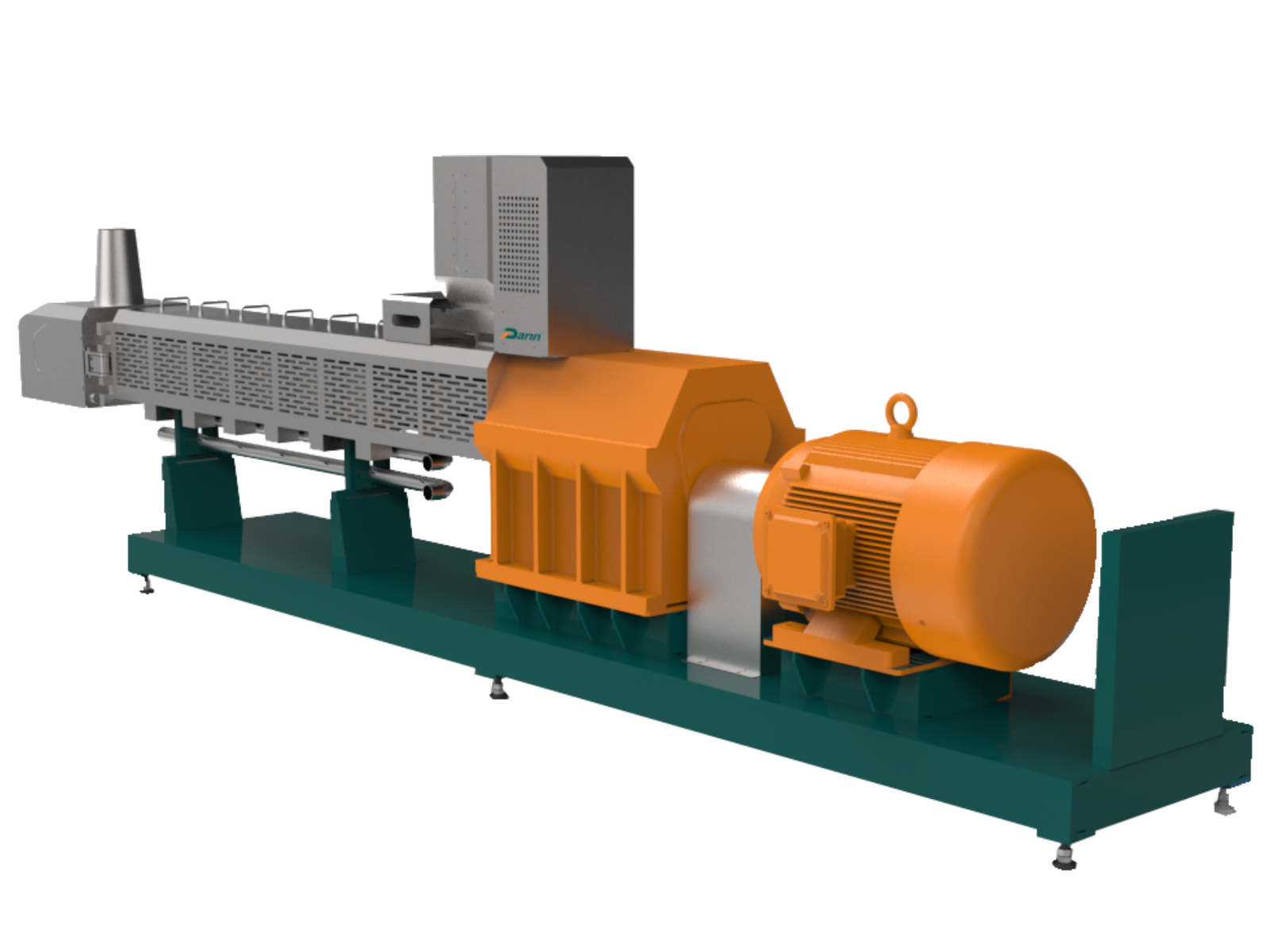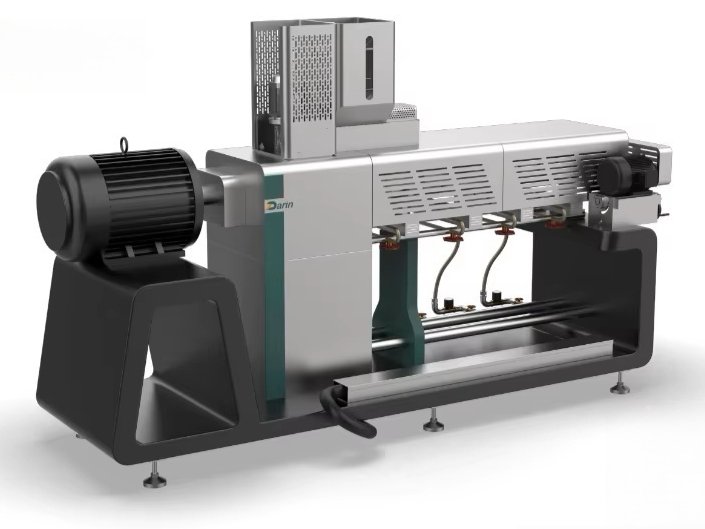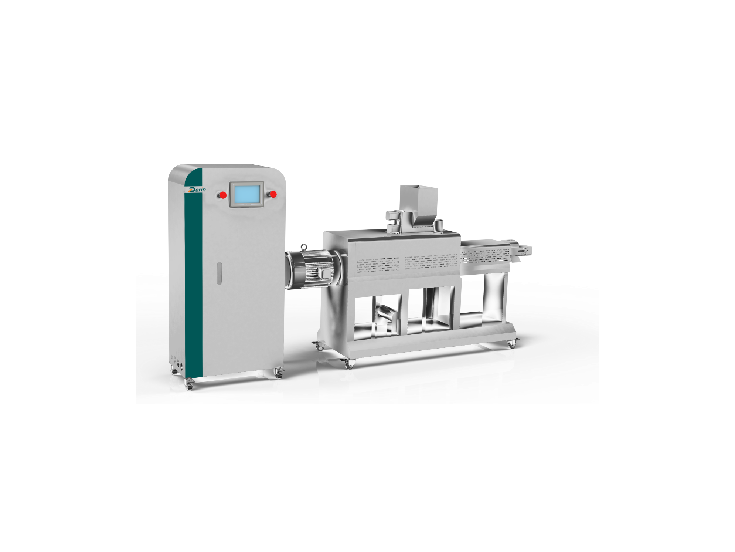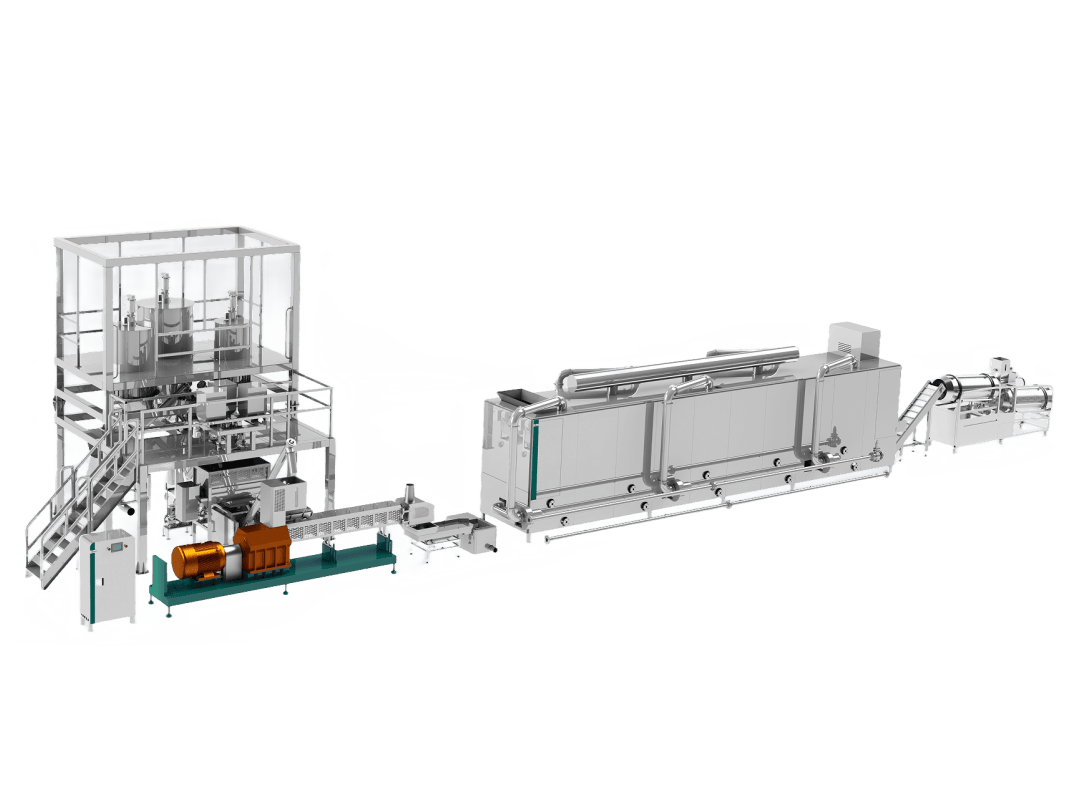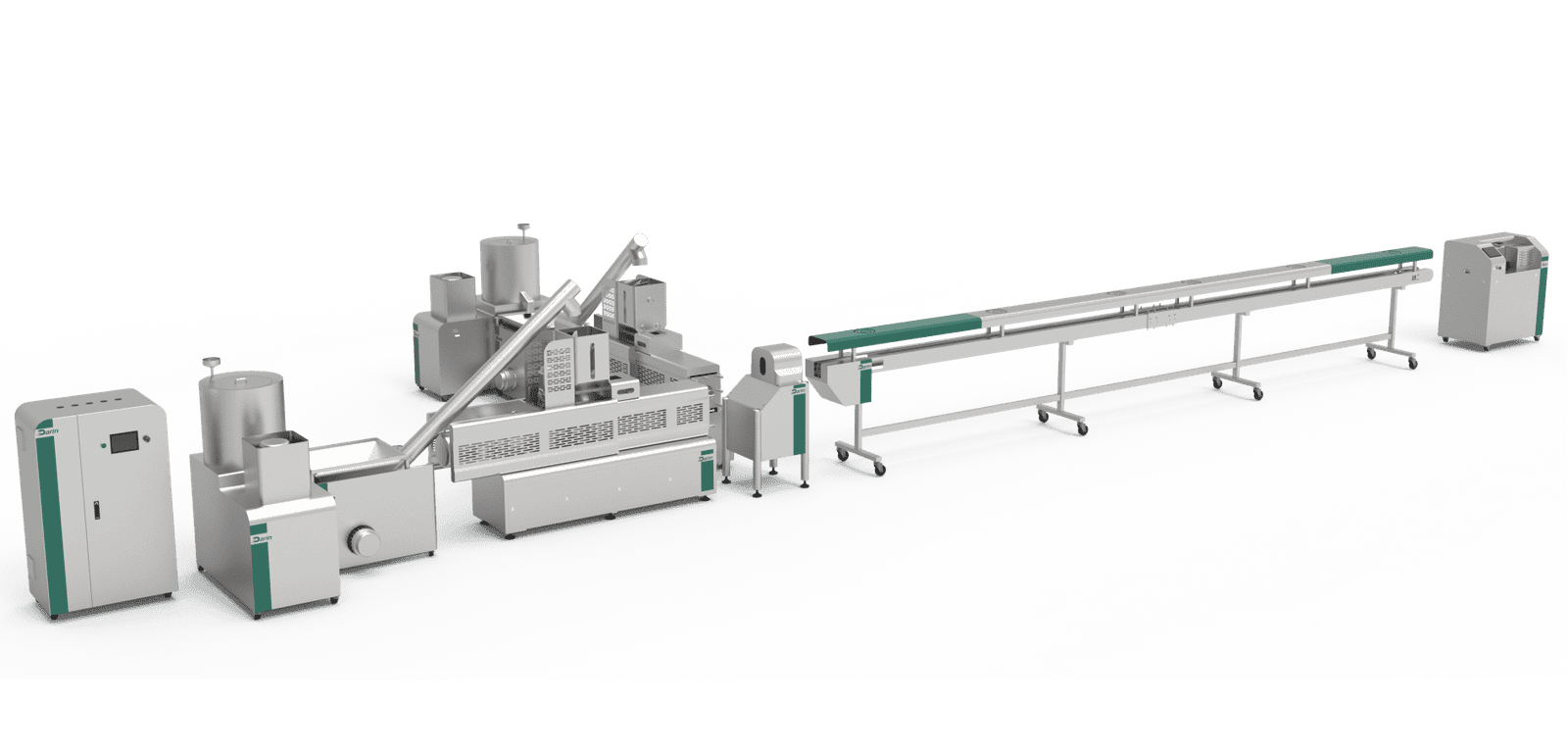
The pet food industry relies heavily on extrusion technology to produce high-quality, nutritionally balanced, and shelf-stable pet food pellets. Without proper extrusion, pet food would lack consistency, palatability, and digestibility, which could impact pet health. The extrusion process is the key to transforming raw ingredients into kibble that pets love while ensuring optimal nutrition and long shelf life.
The extrusion process for pet food pellets involves cooking and shaping raw ingredients using a specialized extruder under controlled heat, pressure, and moisture. This process gelatinizes starches, denatures proteins, and enhances digestibility while forming uniform-sized pellets. The final product is dried, coated with fats or flavors, and cooled before packaging.
Now, let’s dive deeper into the mechanics of extrusion, the key benefits, and how it influences the quality of pet food.
How Does the Pet Food Extrusion Process Work?
Extrusion is a highly controlled cooking and shaping process that involves multiple stages, each critical to the final quality of pet food pellets. Below is a step-by-step breakdown of the process:
1. Ingredient Preparation and Pre-conditioning
Before entering the extruder, raw ingredients are selected, weighed, and blended based on nutritional formulations. These ingredients typically include:
- Meat and poultry meal
- Cereals and grains (corn, wheat, rice)
- Vegetable proteins (soy, pea protein)
- Fats, vitamins, and minerals
- Functional additives (prebiotics, probiotics, fiber)
These ingredients are then mixed with water and steam in a pre-conditioner to begin hydration and partial cooking, ensuring uniform consistency before extrusion.
2. Cooking and Shaping in the Extruder
The pre-conditioned mixture enters the extruder, a high-pressure machine that consists of:
- A screw mechanism that pushes the mixture forward
- A heated barrel that applies precise temperature control
- Die plates that shape the pellets as they exit
Inside the extruder, heat, pressure, and mechanical shear forces cause starches to gelatinize, proteins to denature, and fats to integrate fully into the mixture. This results in a well-cooked, digestible product.
3. Cutting and Drying
Once the cooked mixture is pushed through the die, rotating knives cut the extruded product into uniform-sized pellets. These pellets then enter a drying oven, where controlled temperatures remove excess moisture, ensuring a crispy texture and long shelf life.
4. Coating and Flavoring
After drying, the pellets move through a coating drum where fats, palatants, and flavor enhancers are sprayed onto the surface. This step enhances palatability and provides essential fatty acids for pet nutrition.
5. Cooling and Packaging
Before packaging, the coated pellets are cooled to prevent condensation inside the packaging, which could lead to spoilage. The final product is then weighed, sealed, and packaged in airtight bags to maintain freshness.
Benefits of Extrusion in Pet Food Production
Extrusion technology offers several advantages that make it the preferred choice for producing pet food:
| Benefit | Explanation |
|---|---|
| Improved Digestibility | Starches are gelatinized and proteins are denatured, making nutrients easier to absorb. |
| Enhanced Palatability | Coating with fats and flavors improves taste and aroma, making food more appealing to pets. |
| Uniform Pellet Size | Ensures consistency in portion control and feeding. |
| Increased Shelf Life | Moisture reduction and proper packaging prevent microbial growth, keeping food fresh for months. |
| Nutrient Retention | Controlled processing conditions help preserve essential vitamins and minerals. |
How Extrusion Affects Nutritional Quality
The high-temperature processing in extrusion might raise concerns about nutrient degradation. However, modern extruders are designed to minimize losses while ensuring maximum bioavailability. Below is a comparison of key nutrients before and after extrusion:
| Nutrient | Raw Ingredient (%) | After Extrusion (%) | Effect |
|---|---|---|---|
| Protein | 25-30% | 24-29% | Slight reduction but enhanced digestibility |
| Starch | 35-45% | 40-50% | Increased gelatinization improves energy absorption |
| Fat | 10-15% | 12-18% | Coating step restores lost fats |
| Vitamins | Variable | Slight decrease | Some heat-sensitive vitamins may require post-extrusion supplementation |
Future Innovations in Pet Food Extrusion
Pet food extrusion technology continues to evolve to meet consumer demands for healthier, more sustainable, and functional pet food. Emerging trends include:
- Cold extrusion techniques to preserve heat-sensitive nutrients.
- Plant-based protein extrusions for sustainable pet diets.
- 3D extrusion printing for customized pet food shapes and textures.
- Automated real-time quality monitoring to enhance consistency.
Conclusion
Extrusion is the backbone of pet food manufacturing, ensuring that each pellet meets strict nutritional, safety, and palatability standards. By precisely controlling heat, pressure, and moisture, this process transforms raw ingredients into a digestible, tasty, and long-lasting pet food product.
For manufacturers looking to optimize their pet food extrusion process, investing in advanced extrusion equipment and monitoring technology is crucial to producing high-quality products.
Looking for Extrusion Solutions? Contact Us Today!
If you're in the pet food manufacturing industry and need reliable extrusion equipment or expert consultation, reach out to our team for tailored solutions.


